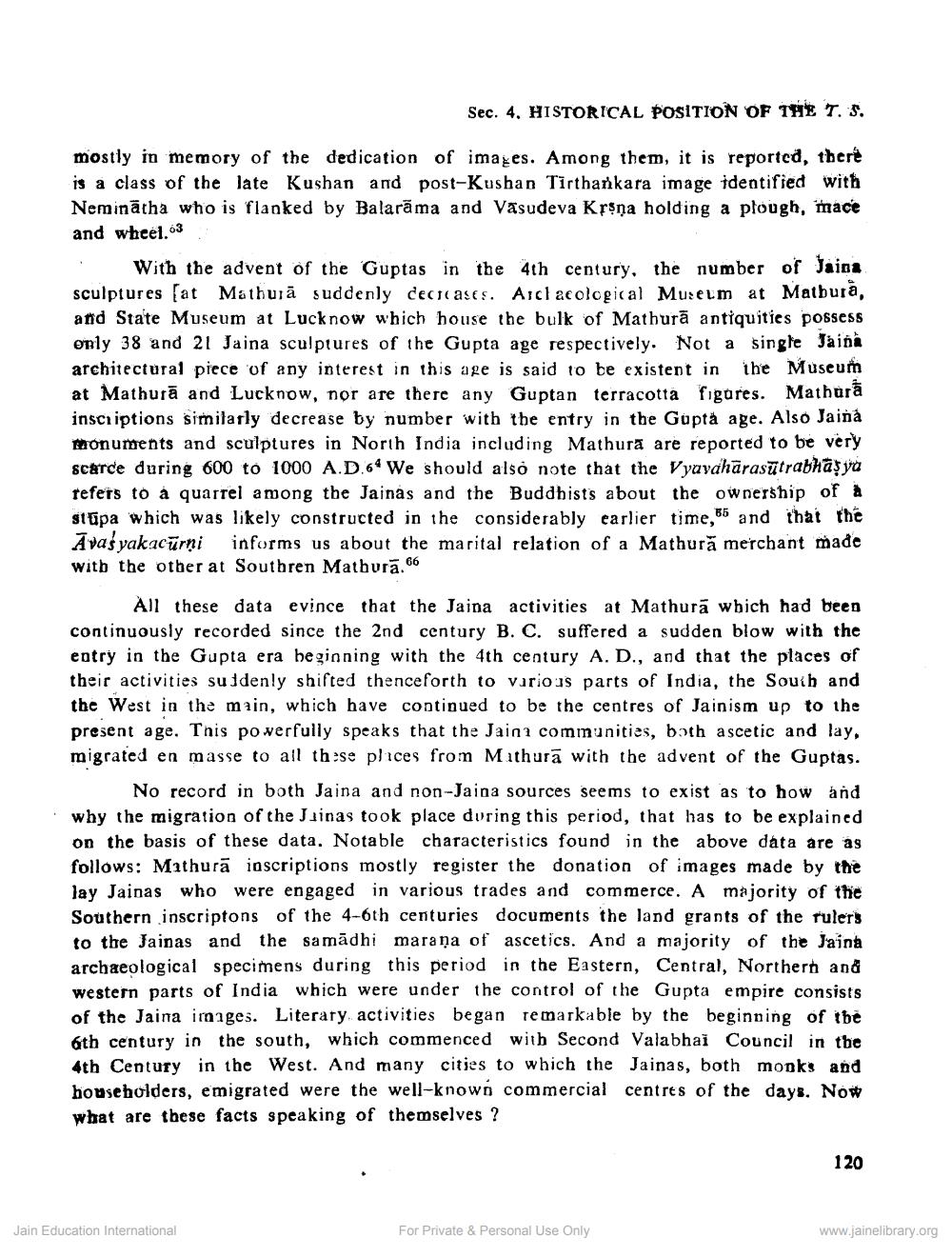________________
Sec. 4. HISTORICAL POSITION OF THE 7. 5. mostly in memory of the dedication of images. Among them, it is reported, there is a class of the late Kushan and post-Kushan Tirthankara image identified with Neminatha who is flanked by Balarama and Vasudeva Krsna holding a plough, mace and wheel.63
With the advent of the Guptas in the 4th century, the number of Jaina sculptures [at Mathura suddenly decreases. Archaeological Museum at Mathura, and State Museum at Lucknow which house the bulk of Mathurā antiquities possess only 38 and 21 Jaina sculptures of the Gupta age respectively. Not a single Jaina architectural piece of any interest in this age is said to be existent in the Museum at Mathura and Lucknow, nor are there any Guptan terracotta figures. Mathura inscriptions similarly decrease by number with the entry in the Gupta age. Also Jaina monuments and sculptures in North India including Mathura are reported to be very scarce during 600 to 1000 A.D. We should also note that the Vyavaharasūtrabhāya refers to a quarrel among the Jainas and the Buddhists about the ownership of h stupa which was likely constructed in the considerably earlier time, and that the Avasyakacurṇi informs us about the marital relation of a Mathura merchant made with the other at Southren Mathura.66
All these data evince that the Jaina activities at Mathura which had been continuously recorded since the 2nd century B. C. suffered a sudden blow with the entry in the Gupta era beginning with the 4th century A. D., and that the places of their activities suddenly shifted thenceforth to various parts of India, the South and the West in the main, which have continued to be the centres of Jainism up to the present age. This powerfully speaks that the Jaina communities, both ascetic and lay, migrated en masse to all these places from Mathura with the advent of the Guptas.
No record in both Jaina and non-Jaina sources seems to exist as to how and why the migration of the Jainas took place during this period, that has to be explained on the basis of these data. Notable characteristics found in the above data are as follows: Mathura inscriptions mostly register the donation of images made by the lay Jainas who were engaged in various trades and commerce. A majority of the Southern inscriptons of the 4-6th centuries documents the land grants of the rulers to the Jainas and the samadhi marana of ascetics. And a majority of the Jaina archaeological specimens during this period in the Eastern, Central, Northern and western parts of India which were under the control of the Gupta empire consists of the Jaina images. Literary activities began remarkable by the beginning of the 6th century in the south, which commenced with Second Valabhai Council in the 4th Century in the West. And many cities to which the Jainas, both monks and householders, emigrated were the well-known commercial centres of the days. Now what are these facts speaking of themselves?
Jain Education International
For Private & Personal Use Only
120
www.jainelibrary.org




